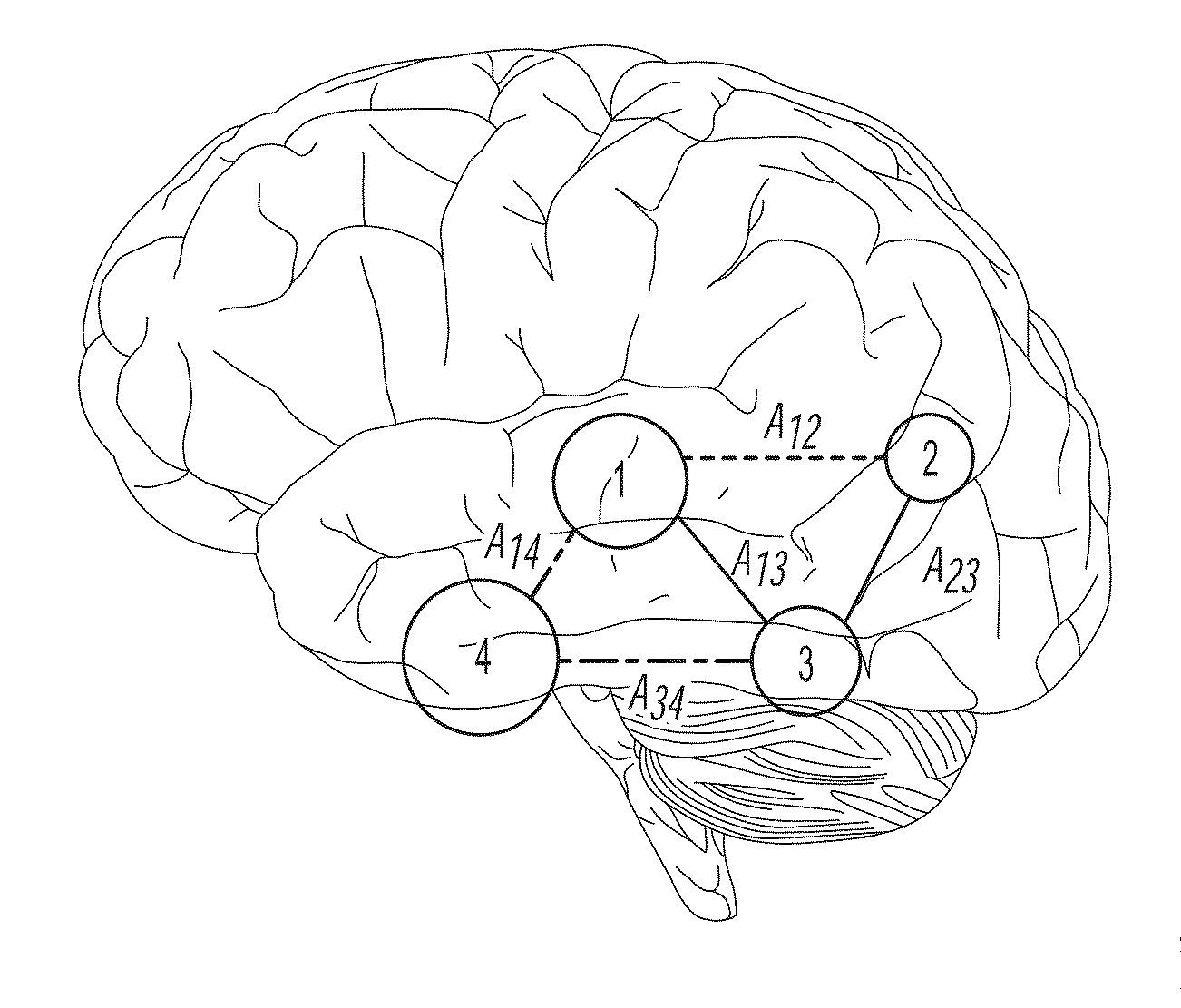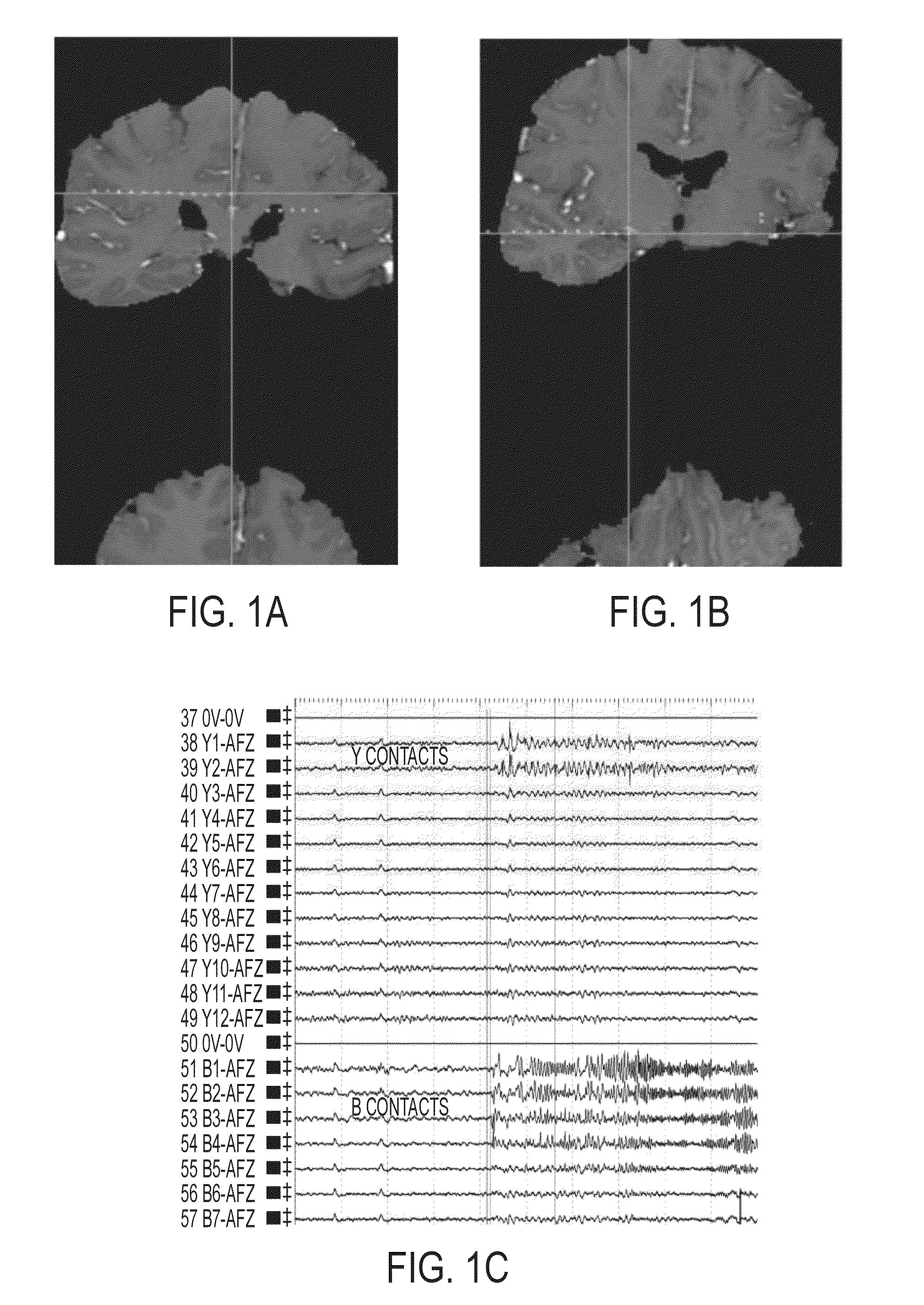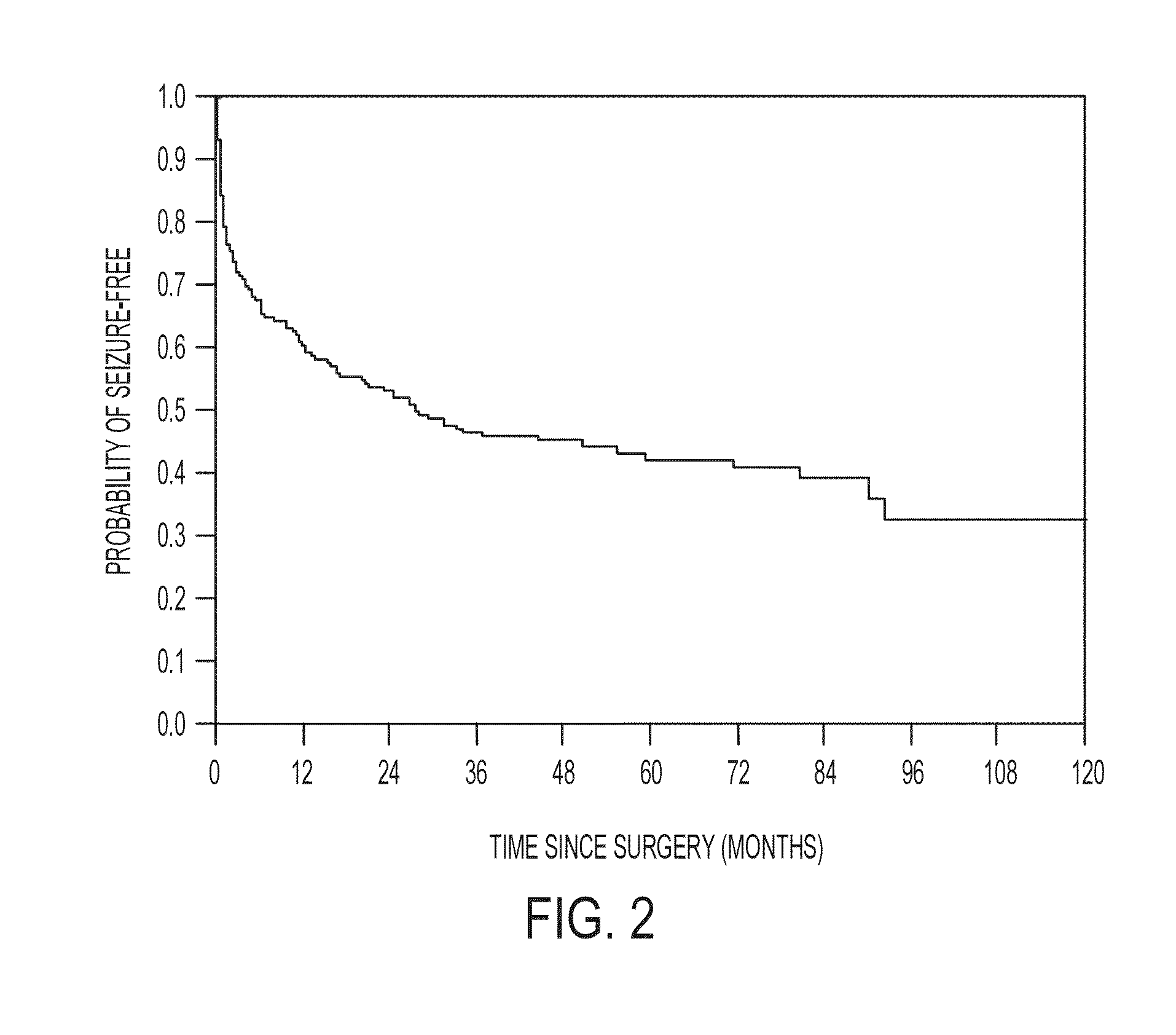Computatonal tool for pre-surgical evaluation of patients with medically refractory epilepsy
a technology of epilepsy and pre-surgical evaluation, applied in the field of methods and systems for evaluating epileptic zones of subjects brain, can solve the problems of inability to obtain education, gainful employment, driving privileges, and inability to sample relatively deep epileptic foci with adequate spatial and temporal resolution
- Summary
- Abstract
- Description
- Claims
- Application Information
AI Technical Summary
Benefits of technology
Problems solved by technology
Method used
Image
Examples
examples
Intracranial EEG Dynamic Network Analysis Offers Assistance for EZ Localization
[0034]Recently, we showed that intracranial EEG is rich in information beyond the typical signatures clinicians use to identify the EZ [2]-23]. In particular, by viewing the epileptic brain as a dynamic networked system where EEG signals are correlated both temporally and spatially, we have constructed a set of network-based statistics whose temporal evolution distinguishes the epileptic regions from the non-epileptic regions (see below for some more details). We used these tome series statistics to develop a binary classification tool, EZTrack, that has been tested on 5 patients implanted with SDE and 5 patients implanted with SEEG electrodes. For SEEG patients, EZtrack according to en embodiment of the current invention achieved an overall performance of 88% sensitivity and 100% specificity when its predicted EZ was compared to post-resection seizure outcome and histological reports of resected tissue. ...
PUM
 Login to View More
Login to View More Abstract
Description
Claims
Application Information
 Login to View More
Login to View More - R&D
- Intellectual Property
- Life Sciences
- Materials
- Tech Scout
- Unparalleled Data Quality
- Higher Quality Content
- 60% Fewer Hallucinations
Browse by: Latest US Patents, China's latest patents, Technical Efficacy Thesaurus, Application Domain, Technology Topic, Popular Technical Reports.
© 2025 PatSnap. All rights reserved.Legal|Privacy policy|Modern Slavery Act Transparency Statement|Sitemap|About US| Contact US: help@patsnap.com



